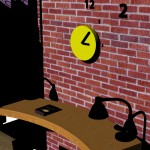by Rick van de Westelaken.
Almost 2 billion people are traveling by airplane every year. A large group of passengers experience discomfort or stress in some degree during a flight. This is not surprising because on the one hand humans have not evolved naturally to fly and are better suited to terrestrial travel. On the other hand airlines try to fit as many chairs in a plane as possible to keep the ticket prices low with limited seating space in economy class as result.
In 2006 an European funded project entitled “SEAT” (smart technologies for stress free air travel) was set up to investigate and develop new innovative ways to improve comfort in air travel. The final master project described in this report is executed as part of the SEAT project and has the objective to improve the perceived level of comfort in air travel. Because the term “comfort” is quite broad it was further defined as reducing psychological stress and supporting passengers with their activities during a long-haul flight.
Read More: [Final Mater Project Report, PDF, 1.7M]



